Wipeout is a series of futuristic anti-gravity racing video games developed by Studio Liverpool.

Wipeout 2097 is a futuristic racing game developed and published by Psygnosis. It is the second installment released in the Wipeout series and the direct sequel of the original game released the previous year. It was originally released in 1996 for the PlayStation, and in 1997 for Microsoft Windows and the Sega Saturn. It was later ported by Digital Images to the Amiga in 1999 and by Coderus to Mac OS in 2002.

Twisted Metal 2 is the second game in the vehicular combat series, Twisted Metal. It was developed by the game studio SingleTrac, published by Sony, and released in 1996 for PlayStation and Microsoft Windows.

The Adventures of Lomax is a platforming video game created by Psygnosis in 1996 for the PlayStation and Microsoft Windows. It is a spin-off video game of the Lemmings series. The player takes the role of Lomax, a lemming knight who must save his fellow lemmings who have been brainwashed by the wicked sorcerer Evil Ed.

Formula 1 97 is a racing video game developed by Bizarre Creations and published by Psygnosis for PlayStation and Microsoft Windows. It is the sequel to the 1996 video game Formula 1 and was based on the 1997 Formula One World Championship. This was the last Formula One game to be made by the Bizarre Creations team, who moved on to create the successful Metropolis Street Racer for the Dreamcast and Project Gotham Racing for the Xbox.
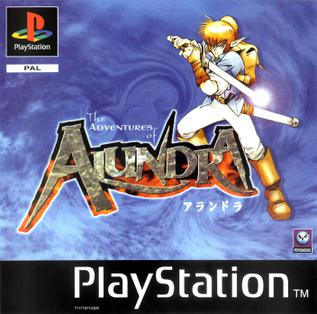
Alundra, released in Europe as The Adventures of Alundra, is an action-adventure video game developed by Matrix Software for the PlayStation, originally released in 1997.

Overboard! is a top-down adventure game, released by Psygnosis for the PlayStation and Microsoft Windows in October 1997. It employs a light-hearted, all-ages piratical theme. A relatively low-key release for Psygnosis, the game was met with mixed reviews.

Wipeout 3 is a futuristic racing video game developed by Psygnosis exclusively for the PlayStation. The title is the fourth game in the Wipeout series, and was released in Europe and North America in September 1999. Players control anti-gravity ships and use weapons to force other contenders out of the race.

RayStorm is a 1996 vertically scrolling shooter arcade video game developed and published by Taito. It has been ported to several consoles, including the PlayStation, Sega Saturn, and Xbox 360. Players control a starship, the R-Gray, in its mission to destroy the Secilia Federation before it destroys Earth.

G-Police is a 1997 combat flight simulation video game developed and published by Psygnosis for PlayStation and Microsoft Windows.

Colony Wars: Red Sun is a space combat simulator video game for the PlayStation developed by Psygnosis and published by Sony Computer Entertainment Europe and Midway Games in 2000. It is a sequel to Colony Wars in 1997 and Colony Wars: Vengeance in 1998. Instead of being a starfighter pilot for the League of Free Worlds or the Colonial Navy, the player now assumes the role of a civilian miner-turned-mercenary.

Thunder Truck Rally is a monster truck racing video game developed by Reflections and published by Psygnosis where players select a monster truck or otherwise 4X4 vehicle equipped with monster truck tires and have the option of either racing or crushing cars in an arena.

Sentient is a first-person adventure developed by Psygnosis and released on the PlayStation and PC (DOS/Windows) in April 1997.

Psybadek is a video game for the PlayStation console. It was designed and released by Psygnosis on November 17, 1998. The game was sponsored by shoe company Vans.

Krazy Ivan is a mecha first-person shooter released for PC, Sega Saturn and PlayStation in 1996 by Psygnosis.
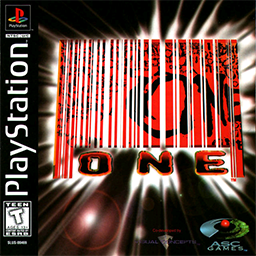
One is a video game released for the Sony PlayStation in 1997. The player controls John Cain, a man who awakes with no memory and one of his arms replaced by a gun, through a series of three-dimensional action stages. One was met with divisive reviews from critics, with some lauding its visuals, level designs, and cinematic feel, while others argued that frustrations with the gameplay ruin what had been a promising game. The game was released as a PSone Classic for download on the PlayStation Network on March 18, 2010.
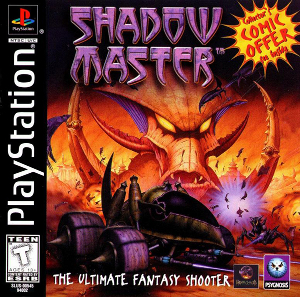
Shadow Master is a video game developed by HammerHead and published by Psygnosis for the PlayStation and Microsoft Windows.

Andretti Racing is a video game developed by American studios High Score Productions and Stormfront Studios and published by Electronic Arts for the PlayStation and Sega Saturn in 1996, and for Windows in 1997. The game's title refers to legendary racing drivers Mario Andretti and Michael Andretti.
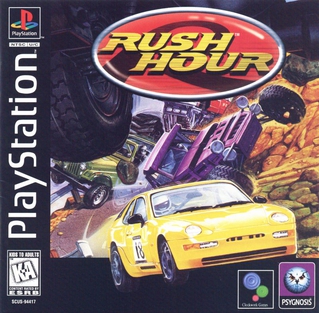
Rush Hour, known in Europe as Speedster, is a video game developed by Clockwork Entertainment and published by Psygnosis for the PlayStation and Windows in 1997. The PlayStation version was ported to Japan and published by Nihon Bussan under the name BattleRound USA on April 29, 1998.
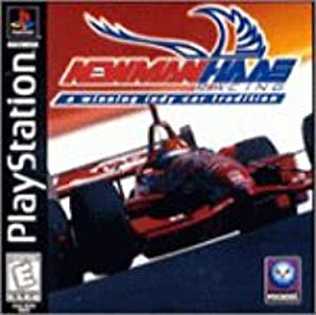
Newman/Haas Racing is a racing video game developed by Studio 33 and published by Psygnosis for the PlayStation and Windows in 1998. It has been described as similar to Psygnosis's Formula One series.


















